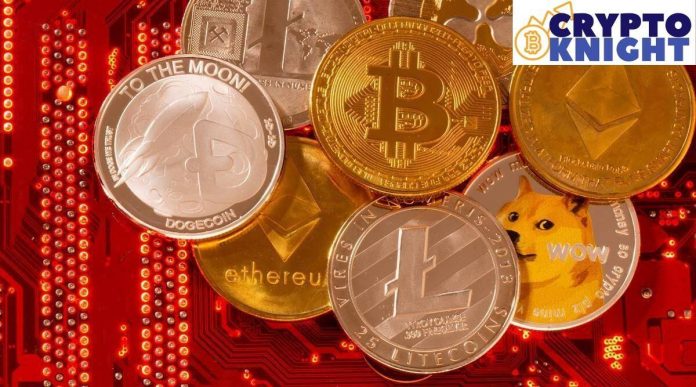With artists and digital creators looking at non-fungible-tokens (NFTs) as a means of monetising their talents, the NFT market is witnessing a huge growth— both, in terms of popularity as well as transactions. Thousands of digital files are being exchanged daily and this comes with a transaction cost called gas fees.
NFTs have transformed the digital art world, making it possible for anyone to sell their work for substantial amounts of money. You don’t necessarily have to be an artist to sell NFTs. Anything can be sold as an NFT including music, drawings, GIF, tweets and even a selfie can be sold for millions of dollars. But keep in mind you have tokenise your work and list it on marketplaces like Opensea, Superrare, Rarible, etc., first. (Check our article on how you can convert your digital art and list it on marketplaces and circle back.)
In today’s column we discuss what NFT gas fees are, how to calculate them and why they are needed at all.
Introducing Gas fee
In simple words, when you list your NFT on a marketplace, you pay something a gas fee for using the Blockchain, following which your digital art is then recorded on Blockchain, mentioning that you (your address) own the particular NFT. This gives you full ownership—which cannot be edited or modified by anyone, including the marketplace owner.
An NFT is thus created, or in crypto lingo say “minted”, to get exclusive ownership rights. NFTs can have only one owner at a time. Consider gas fee like a ‘processing fee’ you pay to your bank for every transaction you make online. It is essentially the computing power that you utilise and pay for.
You might be wondering why a gas fee is needed for NFT minting (creating a new NFT)? With Gas fees, transactions on any blockchain are secure from unwanted spammers. This stops any individuals from using the computing power of the blockchain arbitrarily. It is an efficient way to maintain network security. Gas fees also help the blockchain pay the miners as a form of incentive for entering user transactions into the blockchain.
It should be noted that most of the popular NFT marketplaces use Ethereum blockchain for minting NFTs.
Exorbitant Gas fees
For newbie NFT artists, gas fees could be a matter of concern, because dealing with Ethereum networks can be expensive.
NFTs don’t necessarily sell for millions of dollars. Most of them sell for a few hundred dollars, and many may not be sold at all. So, for all the digital creators who pay gas fees for minting their NFT artwork, they may lose more money rather than making a profit. It is not easy to predict what you’ll be paying for gas, since the price keeps on fluctuating.
Calculating Gas fees
There are several factors that should be taken into consideration for calculating gas fees. Starting from the complexity of the transaction, price of the crypto asset and the number of people transacting on the blockchain.
The unit of gas on the Ethereum network is GWEI. One GWEI is worth one-millionth of Ether or 0.000000001 ETH. And the minimum amount of gas required to process a transaction is 21,000.
Imagine a cargo transport truck service, transporting goods from point A to B. The heavier the goods, the more time it will take, since more fuel will be consumed. Also, if the routes are congested because of other cargo drivers, the truck will consume more fuel, due to the wait-time. In similar fashion, gas fee prices fluctuate depending on the complexity and the traffic on the blockchain network.
The unit of gas on the Ethereum network is GWEI.(Photo: Etherscan.io)
If you want to upload an artwork and sell it as an NFT, say on OpenSea NFT marketplace. Keep this formula in mind : Total transaction fee = Gas Units (Limit) × (Base Fee + Tip)
Gas Units will always be 21,000 (the minimum gas required to process a transaction on Ethereum) multiplied by Base Fee (it changes constantly, and can be monitored on etherscan.io), and a tip which is paid to miners for helping process the transaction.
With a gas limit of 21,000, base fee of 35 gwei (at the current rate) and a tip of 20 gwei, the total fee is 11,55,000 gwei. Now, convert this unit to ETH by multiplying it by 0.000000001, which is equivalent to 0.001155 ETH or $3.71
The cost to mint an NFT ranges widely, all depending on the base fee. When converted to fiat, the cost can vary from $1 up to $500 or more. Creators have the option to choose from several NFT marketplaces, with each platform charging different fees. Notably, there is no option to skip gas fees.
Saving Gas fees
Gas fees might seem like an expensive affair. However, there are some ways to save on gas fees as well. Weekends are mostly quieter trading times, so the traffic on Blockchain is low as compared to other weekdays. This results in reduced transaction gas fees.
Users can also save on the transaction fee by setting a gas fee limit, the transaction will only be performed when the fees are low enough. If you can wait for an undefined period when the prices drop, this may be an option for you.
Lastly, gas fees completely depend on the blockchain you use. If you want to get rid of gas fees completely, you can opt-in for Polygon chain, which is devoid of any gas fees. Meanwhile, Solana utilises very low gas fees in comparison to Ethereum or Bitcoin blockchain network.
Final word
With marketplaces adding support to faster, efficient and cheaper Blockchains, NFTs will only grow in popularity. Blockchain technology offers artists new markets without any limit where they can ply their trade.
These markets come with some cost, therefore it is important for artists to understand the costs of minting and selling, otherwise they could lose money. To make it big on blockchain, it is recommended for all the users to know the tricks of the trade to lower the transaction cost or popularly known as ‘gas fee’.
Credit: Source link






















 Bitcoin
Bitcoin  Ethereum
Ethereum  Tether
Tether  Solana
Solana  USDC
USDC  XRP
XRP  Lido Staked Ether
Lido Staked Ether  Dogecoin
Dogecoin  Toncoin
Toncoin  Cardano
Cardano  Shiba Inu
Shiba Inu  Avalanche
Avalanche  TRON
TRON  Wrapped Bitcoin
Wrapped Bitcoin  Polkadot
Polkadot  Bitcoin Cash
Bitcoin Cash  Chainlink
Chainlink  NEAR Protocol
NEAR Protocol  Polygon
Polygon  Litecoin
Litecoin  Fetch.ai
Fetch.ai  Internet Computer
Internet Computer  Uniswap
Uniswap  LEO Token
LEO Token  Dai
Dai  Ethereum Classic
Ethereum Classic  Render
Render  Hedera
Hedera  First Digital USD
First Digital USD  Aptos
Aptos  Cosmos Hub
Cosmos Hub  Mantle
Mantle  Cronos
Cronos  Pepe
Pepe  Wrapped eETH
Wrapped eETH  Filecoin
Filecoin  Stellar
Stellar  Stacks
Stacks  Immutable
Immutable  OKB
OKB  Renzo Restaked ETH
Renzo Restaked ETH  dogwifhat
dogwifhat  Bittensor
Bittensor  Optimism
Optimism  Arbitrum
Arbitrum  The Graph
The Graph  Maker
Maker  Arweave
Arweave 
